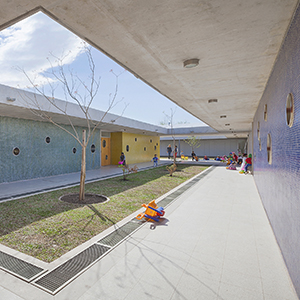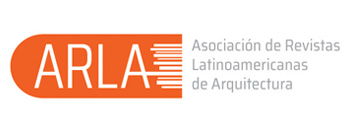A school takes up a lot of space
DOI:
https://doi.org/10.35305/23626097v7i13.280Keywords:
architecture, school, criticismAbstract
This essay argues that -from the architectural perspective- school program becomes a fundamental issue when dealing with the review of the current crisis of architectural criticism. This means to address some of the supporting points of a project tradition which has an inward examination as part of its collective daily practice. Since the second half of the 19th century, school architectural design has shaped a long-term collective practice in Argentina. It is based on the review of themes that are typical of school program as well as project problems that call for a disciplinary debate, for example, the architectural view of the city. Thus, taking into account the mutation of public space and the lack of spaces designed for the development of civility in the contemporary city, it is asserted that school program is strategically attractive for architecture when deploying its critical agenda.
Downloads
References
Bauman, Z. (2000). Modernidad líquida. México D. F., México: Fondo de Cultura Económica.
Bornemann, E. (1975). Un elefante ocupa mucho espacio. Buenos Aires, Argentina: Librería Fausto.
Brandariz, G. (1998). La arquitectura escolar de inspiración sarmientina. Buenos Aires, Argentina: Eudeba.
Dussel, I. (2011). La escuela y los nuevos medios digitales. Notas para pensar las relaciones con el saber en la era digital. En A. Artopoulos, La sociedad de las cuatro pantallas. Una mirada latinoamericana, Barcelona, España: Ariel-Fundación Telefónica.
Eagleton, T. (2017). Cultura. Barcelona, España: Taurus.
Espinoza, L. (2016). Arquitectura educativa y políticas públicas en Santa Fe (2007-2011). Producción y comunicación de la arquitectura en el Estado. Colección tesis doctorales, FAPyD, UNR, Rosario, Argentina: UNR Editora. https://fapyd.unr.edu.ar/categoria_publicacion/coleccion-tesis-doctorales/
Foster, H. (2013). El complejo arte-arquitectura. Madrid, España: Turner.
Gizzarelli, M. H. (1985). “La pequeña utopía urbana. Escuelas municipales 1880/1930”. En Summarios, 91/92.
Han, B-Ch. (2013). La sociedad de la transparencia. Barcelona, España: Herder.
Han, B-Ch. (2014). En el enjambre. Barcelona, España: Herder.
Koolhaas, R. (2007). Espacio basura, Barcelona, España: Gustavo Gili.
Primer Centenario de la Independencia Argentina, 1816-9 de julio-1916.
Municipalidad de Santa Fe (2019), Obras de arquitectura. Santa Fe 2011-2019.

Published
How to Cite
Issue
Section
License
Open access policy
A&P Continuidad is a non-profit and open access publication. According to Mexico Declaration on Cultural Policies, the journal distribution is submitted to Creative Commons Attribution-Noncommercial-ShareAlike 4.0 International Public License (CC BY-NC-SA). “Neither the commercial use of the original work nor that of the possible derivative works are allowed. The distribution of derivative works should be submitted to the license regulating the original work. This license is not free.”
A&P Continuidad authorizes the partial or full reproduction of texts and graphs provided that the source is cited. Authors are exclusively responsible for the criteria expressed in the articles which do not necessarily reflect the opinion of the Editorial Committee or that of the Direction Board. The copyright of the published articles pertains to their authors or publishers.
Transfer of rights
The acceptance of an article to be published implies the author’s transfer of rights to the journal. Authors continue to have the right to use the material in future books or publications, approve or veto the republication of their works as well as the rights related to patents or other rights. Transfer of rights form may be downloaded here.























 This OJS site and its metadata are under a
This OJS site and its metadata are under a 

